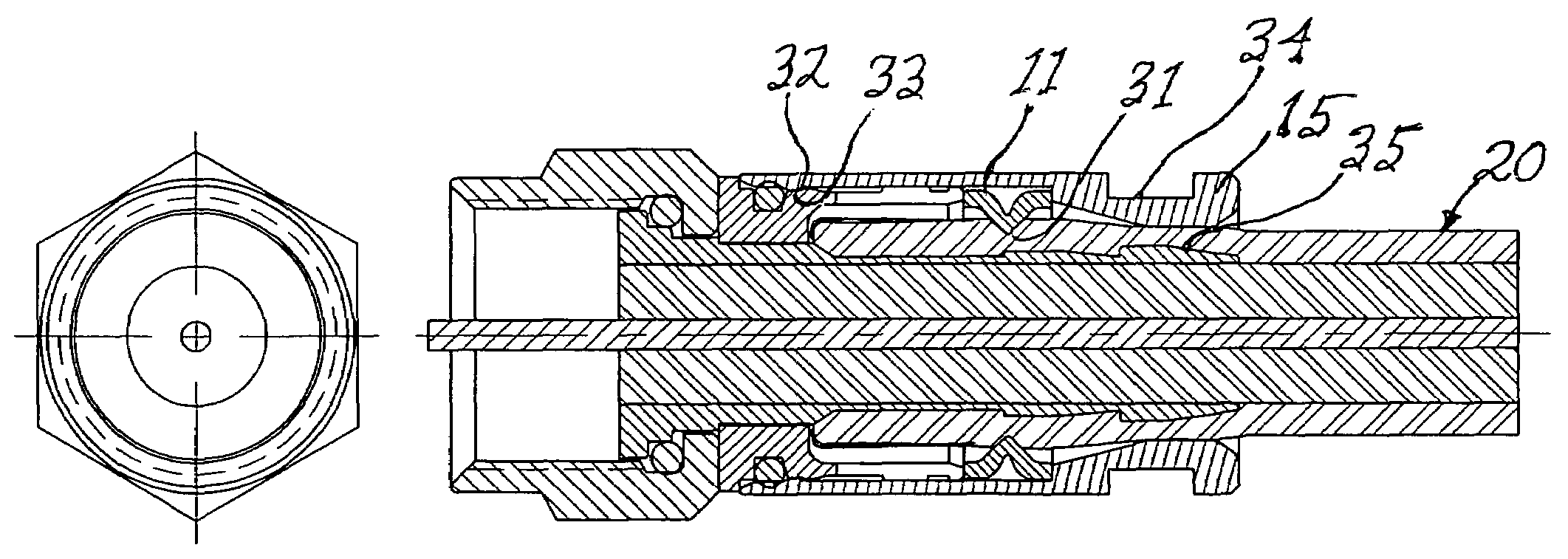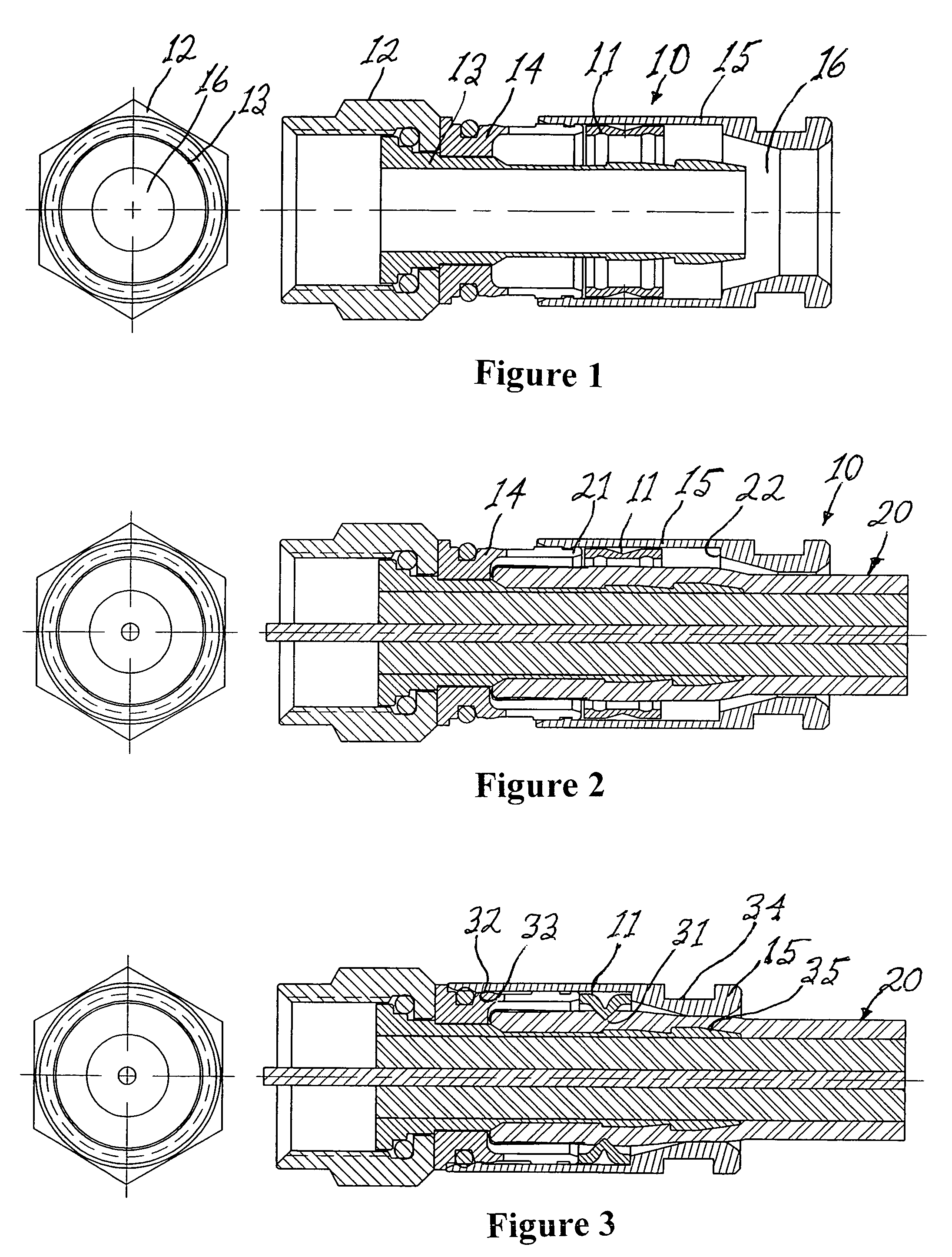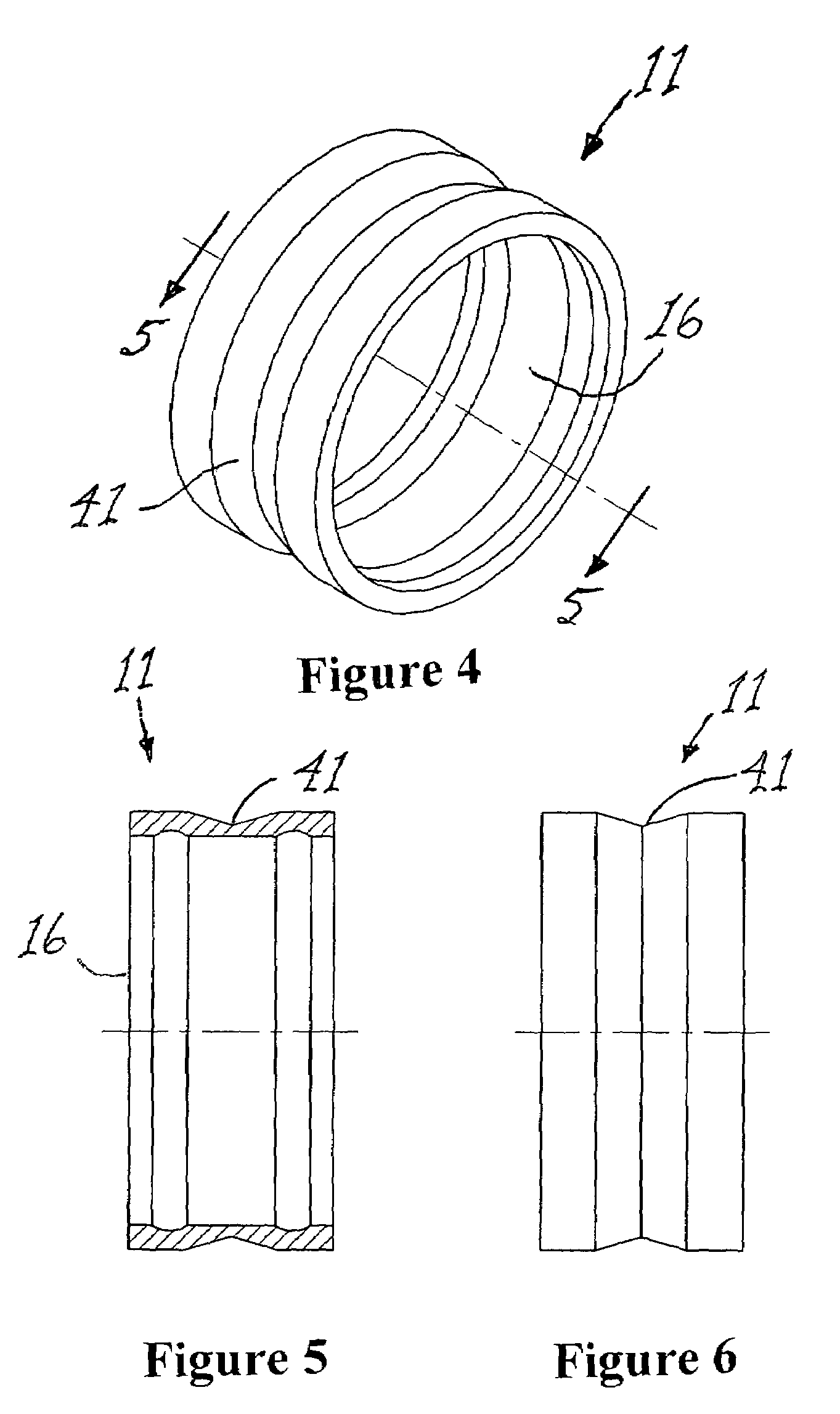Compression ring for coaxial cable connector
a compression ring and coaxial cable technology, applied in the direction of connections, basic electric elements, electric devices, etc., can solve the problems of patent problems, connector disclosure, and a wide range of compression-type coaxial connectors in current use, and achieve the effect of facilitating deformation
- Summary
- Abstract
- Description
- Claims
- Application Information
AI Technical Summary
Benefits of technology
Problems solved by technology
Method used
Image
Examples
first embodiment
[0030]FIG. 1 is a longitudinal cross-sectional view of a coaxial cable connector 10 comprising a compression ring 11 in accordance with the present invention prior to attachment to the prepared end of a coaxial cable and in an uncompressed configuration. The connector 10 comprises a connector nut 12 having a tubular shank 13 extending rearwardly therefrom and a body portion 13 affixed to the connector nut and the tubular shank. An outer shell 15 having a central lumen 16 is slidably attached to the body portion 14 at the leading end thereof. The compression ring 11 of the present invention is removably disposed within the central lumen of the outer shell 15 rearward of the trailing end of the body portion 14.
[0031]FIG. 2 is a longitudinal cross-sectional view of the coaxial cable connector 10 of FIG. 1 in the uncompressed configuration and showing the prepared end of a coaxial cable 20 inserted into the axial lumen 16 of the connector and fully advanced thereinto prior to attachment...
second embodiment
[0034]FIG. 7 is a partially cross-sectional side view of a coaxial cable connector 70 in accordance with the present invention. The connector 70 is shown in an open (i.e., noncompressed) position in FIG. 7. The connector 70 has a connector nut 71 on a leading end thereof and a centerpost 72 having a barb(s) 73 thereon. A hard rubber or plastic deformable tubular sleeve 74 has a leading end 75 that abuts the connector nut 71 and a trailing end in opposition thereto and a plurality of annular grooves 74a in the outer surface thereof. While the cross-sectional profile of the grooves 74a are illustrated as semicylindrical, it is understood that the groove profile can have other shapes such as being “V”-shaped”. A rigid, tubular shell 77 is slidable mounted on the outer surface of the sleeve 74. The shell 77 has a recurved trailing end 78 having a circular opening 79 therein, The opening 79 is dimensioned to accommodate the passage of the prepared end of a coaxial cable 90 (FIG. 9) there...
PUM
 Login to View More
Login to View More Abstract
Description
Claims
Application Information
 Login to View More
Login to View More - R&D
- Intellectual Property
- Life Sciences
- Materials
- Tech Scout
- Unparalleled Data Quality
- Higher Quality Content
- 60% Fewer Hallucinations
Browse by: Latest US Patents, China's latest patents, Technical Efficacy Thesaurus, Application Domain, Technology Topic, Popular Technical Reports.
© 2025 PatSnap. All rights reserved.Legal|Privacy policy|Modern Slavery Act Transparency Statement|Sitemap|About US| Contact US: help@patsnap.com



